Transurethral microwave thermotherapy for the treatment of lower urinary tract symptoms in men with benign prostatic hyperplasia
- PMID: 34180047
- PMCID: PMC8236484
- DOI: 10.1002/14651858.CD004135.pub4
Transurethral microwave thermotherapy for the treatment of lower urinary tract symptoms in men with benign prostatic hyperplasia
Abstract
Background: Transurethral resection of the prostate (TURP) has been the gold-standard treatment for alleviating urinary symptoms and improving urinary flow in men with symptomatic benign prostatic hyperplasia (BPH). However, the morbidity of TURP approaches 20%, and less invasive techniques have been developed for treating BPH. Transurethral microwave thermotherapy (TUMT) is an alternative, minimally-invasive treatment that delivers microwave energy to produce coagulation necrosis in prostatic tissue. This is an update of a review last published in 2012.
Objectives: To assess the effects of transurethral microwave thermotherapy for the treatment of lower urinary tract symptoms in men with benign prostatic hyperplasia.
Search methods: We performed a comprehensive search using multiple databases (the Cochrane Library, MEDLINE, Embase, Scopus, Web of Science, and LILACS), trials registries, other sources of grey literature, and conference proceedings published up to 31 May 2021, with no restrictions by language or publication status.
Selection criteria: We included parallel-group randomized controlled trials (RCTs) and cluster-RCTs of participants with BPH who underwent TUMT.
Data collection and analysis: Two review authors independently assessed studies for inclusion at each stage and undertook data extraction and risk of bias and GRADE assessments of the certainty of the evidence (CoE). We considered review outcomes measured up to 12 months after randomization as short-term and beyond 12 months as long-term. Our main outcomes included: urologic symptoms scores, quality of life, major adverse events, retreatment, and ejaculatory and erectile function.
Main results: In this update, we identified no new RCTs, but we included data from studies excluded in the previous version of this review. We included 16 trials with 1919 participants, with a median age of 69 and moderate lower urinary tract symptoms. The certainty of the evidence for most comparisons was moderate-to-low, due to an overall high risk of bias across studies and imprecision (few participants and events). TUMT versus TURP Based on data from four studies with 306 participants, when compared to TURP, TUMT probably results in little to no difference in urologic symptom scores measured by the International Prostatic Symptom Score (IPSS) on a scale from 0 to 35, with higher scores indicating worse symptoms at short-term follow-up (mean difference (MD) 1.00, 95% confidence interval (CI) -0.03 to 2.03; moderate certainty). There is likely to be little to no difference in the quality of life (MD -0.10, 95% CI -0.67 to 0.47; 1 study, 136 participants, moderate certainty). TUMT likely results in fewer major adverse events (RR 0.20, 95% CI 0.09 to 0.43; 6 studies, 525 participants, moderate certainty); based on 168 cases per 1000 men in the TURP group, this corresponds to 135 fewer (153 to 96 fewer) per 1000 men in the TUMT group. TUMT, however, probably results in a large increase in the need for retreatment (risk ratio (RR) 7.07, 95% CI 1.94 to 25.82; 5 studies, 337 participants, moderate certainty) (usually by repeated TUMT or TURP); based on zero cases per 1000 men in the TURP group, this corresponds to 90 more (40 to 150 more) per 1000 men in the TUMT group. There may be little to no difference in erectile function between these interventions (RR 0.63, 95% CI 0.24 to 1.63; 5 studies, 337 participants; low certainty). However, TUMT may result in fewer cases of ejaculatory dysfunction compared to TURP (RR 0.36, 95% CI 0.24 to 0.53; 4 studies, 241 participants; low certainty). TUMT versus sham Based on data from four studies with 483 participants we found that, when compared to sham, TUMT probably reduces urologic symptom scores using the IPSS at short-term follow-up (MD -5.40, 95% CI -6.97 to -3.84; moderate certainty). TUMT may cause little to no difference in the quality of life (MD -0.95, 95% CI -1.14 to -0.77; 2 studies, 347 participants; low certainty) as measured by the IPSS quality-of-life question on a scale from 0 to 6, with higher scores indicating a worse quality of life. We are very uncertain about the effects on major adverse events, since most studies reported no events or isolated lesions of the urinary tract. TUMT may also reduce the need for retreatment compared to sham (RR 0.27, 95% CI 0.08 to 0.88; 2 studies, 82 participants, low certainty); based on 194 retreatments per 1000 men in the sham group, this corresponds to 141 fewer (178 to 23 fewer) per 1000 men in the TUMT group. We are very uncertain of the effects on erectile and ejaculatory function (very low certainty), since we found isolated reports of impotence and ejaculatory disorders (anejaculation and hematospermia). There were no data available for the comparisons of TUMT versus convective radiofrequency water vapor therapy, prostatic urethral lift, prostatic arterial embolization or temporary implantable nitinol device.
Authors' conclusions: TUMT provides a similar reduction in urinary symptoms compared to the standard treatment (TURP), with fewer major adverse events and fewer cases of ejaculatory dysfunction at short-term follow-up. However, TUMT probably results in a large increase in retreatment rates. Study limitations and imprecision reduced the confidence we can place in these results. Furthermore, most studies were performed over 20 years ago. Given the emergence of newer minimally-invasive treatments, high-quality head-to-head trials with longer follow-up are needed to clarify their relative effectiveness. Patients' values and preferences, their comorbidities and the effects of other available minimally-invasive procedures, among other factors, can guide clinicians when choosing the optimal treatment for this condition.
Copyright © 2021 The Cochrane Collaboration. Published by John Wiley & Sons, Ltd.
Conflict of interest statement
JVAF: none known. LG: none known. CMEL: none known. MB: Boston Scientific (consultant for endourology and stone management), Auris Health (consultant for robotic surgery and endourology). PD: none known.
Figures

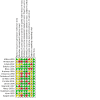


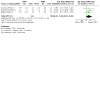
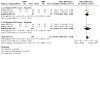


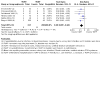
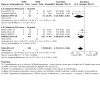
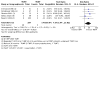

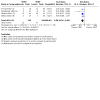

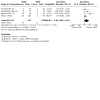


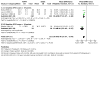




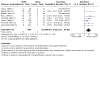
Update of
-
Microwave thermotherapy for benign prostatic hyperplasia.Cochrane Database Syst Rev. 2012 Sep 12;(9):CD004135. doi: 10.1002/14651858.CD004135.pub3. Cochrane Database Syst Rev. 2012. Update in: Cochrane Database Syst Rev. 2021 Jun 28;6:CD004135. doi: 10.1002/14651858.CD004135.pub4. PMID: 22972068 Updated.
References
References to studies included in this review
Abbou 1995 {published data only}
-
- Abbou CC, Payan C, Viens-Bitker C, Richard F, Boccon-Gibod L, Jardin A, et al. Transrectal and transurethral hyperthermia versus sham treatment in benign prostatic hyperplasia: a double-blind randomized multicentre clinical trial. British Journal of Urology 1995;76(5):619-24. - PubMed
Ahmed 1997 {published data only}
-
- Ahmed M, Bell T, Lawrence WT, Ward JP, Watson GM. Transurethral microwave thermotherapy (Prostatron version 2.5) compared with transurethral resection of the prostate for the treatment of benign prostatic hyperplasia: a randomized, controlled, parallel study. British Journal of Urology 1997;79(2):181-5. - PubMed
Albala 2002 {published data only}
-
- Albala DM, Andriole G, Davis BE, Eure GR, Kabalin JN, Lingeman JE, et al. Transurethral microwave thermotherapy (TUMT) using the TherMatrx TMX-2000: Durability exhibited in a study comparing tumt with a sham procedure in patients with benign prostatic hyperplasia (BPH). Journal of Urology 2003;169(4):465.
-
- Albala DM, Andriole GL, Davis B, Eure G, Kabalin JN, Lingeman JE, et al. Transurethral microwave thermotherapy (TUMP) using the thermatrx TMx-2000(tm) for treatment of benign prostatic hyperplasia: Five year follow-up of multicenter randomized pivotal trial. Journal of Endourology 2006;20:A71.
-
- Albala DM, Andriole GL, Davis B, Eure G, Kabalin JN, Lingeman JE, et al. Transurethral microwave thermotherapy (TUMT) using the thermatrx TMX-2000 (TM): Long-term results in a study comparing TUMT with a sham procedure in patients with benign prostatic hyperplasia (BPH). Journal of Urology 2005;173(4):420.
-
- Albala DM, Fulmer BR, Turk TM, Koleski F, Andriole G, Davis BE, et al. Office-based transurethral microwave thermotherapy using the TherMatrx TMx-2000. Journal of Endourology 2002;16(1):57-61. - PubMed
Bdesha 1994 {published data only}
-
- Bdesha AS, Bunce CJ, Snell ME, Witherow RO. A sham controlled trial of transurethral microwave therapy with subsequent treatment of the control group. Journal of Urology 1994;152(2 Part 1):453-8. - PubMed
Blute 1996 {published data only}
-
- Blute ML, Patterson DE, Segura JW, Tomera KM, Hellerstein DK. Transurethral microwave thermotherapy v sham treatment: double-blind randomized study. Journal of Endourology 1996;10(6):565-73. - PubMed
Brehmer 1999 {published data only}
-
- Brehmer M, Wiksell H, Kinn A. Sham treatment compared with 30 or 60 min of thermotherapy for benign prostatic hyperplasia: a randomized study. BJU International 1999;84(3):292-6. - PubMed
D'Ancona 1998 {published data only}
-
- D'Ancona FC, Francisca EA, Witjes WP, Welling L, Debruyne FM, De la Rosette JJ. High energy thermotherapy versus transurethral resection in the treatment of benign prostatic hyperplasia: results of a prospective randomized study with 1 year of followup. Journal of Urology 1997;158(1):120-5. - PubMed
-
- D'Ancona FC, Francisca EA, Witjes WP, Welling L, Debruyne FM, De La Rosette JJ. Transurethral resection of the prostate vs high-energy thermotherapy of the prostate in patients with benign prostatic hyperplasia: long-term results. British Journal of Urology 1998;81(2):259-64. - PubMed
-
- D'Ancona FCH, Francisca EAE, Debruyne FMJ, De La Rosette JJMCH. TURP versus high-energy microwave thermotherapy (HE-TUMT) of the prostate in patients with BPH: Long-term results. British Journal of Urology 1998;81(SUPPL. 4):52. - PubMed
-
- Rosette JJ, Ancona FC, Francisca EA, Debruyne FM. High energy transurethral microwave thermotrherapy (HE-TUMT) versus transurethral resection of the prostate (TURP) in the treatment of benign prostatic hyperplasia (BPH); Results of a randomized prospective study with a 1-year follow-up. British Journal of Urology 1997;80(SUPPL. 2):214.
Dahlstrand 1995 {published data only}
-
- Dahlstrand C, Geirsson G, Fall M, Pettersson S. Transurethral microwave thermotherapy versus transurethral resection for benign prostatic hyperplasia: preliminary results of a randomized study. European Urology 1993;23(2):292-8. - PubMed
-
- Dahlstrand C, Walden M, Geirsson G, Pettersson S. Transurethral microwave thermotherapy versus transurethral resection for symptomatic benign prostatic obstruction: a prospective randomized study with a 2-year follow-up. British Journal of Urology 1995;76(5):614-8. - PubMed
-
- Dahlstrand C, Walden M, Geirsson G, Sommar S, Pettersson S. Transurethral microwave thermotherapy versus transurethral resection for BPH. Transurethral microwave thermotherapy versus transurethral resection for BPH. Progress in Clinical and Biological Research 1994;386:455-61. - PubMed
De Wildt 1996 {published data only}
-
- De La Rosette JJ, De Wilt MJ, Alivizatos G, Froeling FM, Debruyne FM. Transurethral microwave thermotherapy (TUMT) in benign prostatic hyperplasia: placebo versus TUMT. Urology 1994;44(1):58-63. - PubMed
-
- De Wildt MJ, Hubregtse M, Ogden C, Carter SS, Debruyne FM, De la Rosette JJ. A 12-month study of the placebo effect in transurethral microwave thermotherapy. British Journal of Urology 1996;77(2):221-7. - PubMed
-
- Francisca EA, D Ancona FC, Hendriks JC, Kiemeney LA, Debruyne FM, De la Rosette JJ. Quality of life assessment in patients treated with lower energy thermotherapy (Prostasoft 2.0): results of a randomized transurethral microwave thermotherapy versus sham study. Journal of Urology 1997;158(5):1839-44. - PubMed
-
- Ogden CW, Reddy P, Johnson H, Ramsay JW, Carter SS. Sham versus transurethral microwave thermotherapy in patients with symptoms of benign prostatic bladder outflow obstruction. Lancet 1993;341(8836):14-7. - PubMed
Floratos 2001 {published data only}
-
- De La Rosette JJ, Floratos DL, Severens JL, Kiemeney LA, Debruyne FM, Pilar Laguna M. Transurethral resection vs microwave thermotherapy of the prostate: a cost-consequences analysis. BJU International 2003, 2003;92(7):713-8. - PubMed
-
- Floratos DL, Kiemeney LA, Rossi C, Kortmann BB, Debruyne FM, De La Rosette JJ. Long-term followup of randomized transurethral microwave thermotherapy versus transurethral prostatic resection study. Journal of Urology 2001;165(5):1533-8. - PubMed
-
- Francisca EA, D'Ancona FC, Meuleman EJ, Debruyne FM, De La Rosette JJ. Sexual function following high energy microwave thermotherapy: Results of a randomized controlled study comparing transurethral microwave thermotherapy to transurethral prostatic resection. Journal of Urology 1999;161(2):486-90. - PubMed
-
- Francisca EA, D Ancona FC, Hendriks JC, Kiemeney LA, Debruyne FM, De La Rosette JJ. A randomized study comparing high-energy TUMT to TURP: quality-of-life results. European Urology 2000;38(5):569-75. - PubMed
Larson 1998 {published data only}
-
- Larson TR, Blute ML, Bruskewitz RC, Mayer RD, Ugarte RR, Utz WJ. A high-efficiency microwave thermoablation system for the treatment of benign prostatic hyperplasia: results of a randomized, sham-controlled, prospective, double-blind, multicenter clinical trial. Urology 1998;51(5):731-42. - PubMed
Nawrocki 1997 {published data only}
-
- ISRCTN24866285. A randomised controlled trial of transurethral microwave thermotherapy (TUMT). www.isrctn.com/ISRCTN24866285 (First received 23 January 2004).
-
- Nawrocki JD, Bell TJ, Lawrence WT, Ward JP. A randomized controlled trial of transurethral microwave thermotherapy. British Journal of Urology 1997;79(3):389-93. - PubMed
Nørby 2002a {published data only}
-
- Nørby B, Nielsen HV, Frimodt-Møller PC. Transurethral interstitial laser coagulation of the prostate and transurethral microwave thermotherapy vs transurethral resection or incision of the prostate: results of a randomized, controlled study in patients with symptomatic benign prostatic hyperplasia. BJU International 2002;90(9):853-62. - PubMed
Roehrborn 1998 {published data only}
-
- Roehrborn CG, Preminger G, Newhall P, Denstedt J, Razvi H, Chin LJ, et al. Microwave thermotherapy for benign prostatic hyperplasia with the Dornier Urowave: results of a randomized, double-blind, multicenter, sham-controlled trial. Urology 1998;51(1):19-28. - PubMed
-
- Trachtenberg J, Roehrborn CG. Updated results of a randomized, double-blind, multicenter sham-controlled trial of microwave thermotherapy with the Dornier Urowave in patients with symptomatic benign prostatic hyperplasia. World Journal of Urology 1998;16(2):102-8. - PubMed
Venn 1995 {published data only}
-
- Venn SN, Montgomery BS, Sheppard SA, Hughes SW, Beard RC, Bultitiude MI, et al. Microwave hyperthermia in benign prostatic hypertrophy: a controlled clinical trial. British Journal of Urology 1995;76(1):73-6. - PubMed
Wagrell 2002 {published data only}
-
- Mattiasson A, Wagrell L, Schelin S, Nordling J, Richthoff J, Magnusson B, et al. Five-year follow-up of feedback microwave thermotherapy versus TURP for clinical BPH: a prospective randomized multicenter study. Urology 2007;69(1):91-7. - PubMed
-
- Wagrell L, Schelin S, Mattiasson A, Magnusson B, Schain M, Ageheim H, et al. Prostalund microwave treatment vs. TURP for LUTS due to BPH. Scandinavian Journal of Urology and Nephrology 2001;35(Suppl 208):18.
-
- Wagrell L, Schelin S, Nordling J, Larsson T, Mattiasson A. Prostalund microwave feedback treatment compared with TURP for treatment of BPH: a prospective randomized multicentre study. Australia and New Zealand Journal of Surgery 2003;73:A146.
-
- Wagrell L, Schelin S, Nordling J, Richthoff J, Magnusson B, Schain M, et al. Three-year follow-up of feedback microwave thermotherapy versus TURP for clinical BPH: a prospective randomized multicenter study. Urology 2004;64(4):698-702. - PubMed
-
- Wagrell L, Schelin S, Nordling J, Richthoff J, Mangnusson B, Schain M, et al. Feedback microwave thermotherapy versus TURP for clinical BPH − a randomized controlled multicenter study. Urology 2002;60:292-9. - PubMed
References to studies excluded from this review
Albala 2000 {published data only}
-
- Albala DM, Turk TM, Fulmer BR, Koleski F, Andriole G, Davis BE, et al. Periurethral transurethral microwave thermotherapy for the treatment of benign prostatic hyperplasia: an interim 1-year safety and efficacy analysis using the thermatrx TMx-2000. Techniques in Urology 2000;6(4):288-93. - PubMed
Arai 2000 {published data only}
-
- Arai Y, Aoki Y, Okubo K, Maeda H, Terada N, Matsuta Y, et al. Impact of interventional therapy for benign prostatic hyperplasia on quality of life and sexual function: A prospective study. Journal of Urology 2000;164(4):1206-11. - PubMed
D'Ancona 1997 {published data only}
-
- D'Ancona FC, Francisca EA, Debruyne FM, De la Rosette JJ. High-energy transurethral microwave thermotherapy in men with lower urinary tract symptoms. Journal of Endourology 1997;11(4):285-9. - PubMed
Dahlstrand 2003 {published data only}
-
- Dahlstrand C. High-energy microwave therapy with benign prostatic hyperplasia. A good and safe therapeutic choice--for both the patient and the health care. Läkartidningen 2003;100(35):2678-83. - PubMed
Djavan 1999 {published data only}
-
- Djavan B, Seitz C, Roehrborn CG, Remzi M, Fakhari M, Waldert M, et al. Targeted transurethral microwave thermotherapy versus alpha-blockade in benign prostatic hyperplasia: outcomes at 18 months. Urology 2001;57(1):66-70. - PubMed
-
- Djavan B, Shariat S, Fakhari M, Ghawidel K, Seitz C, Partin AW, et al. Neoadjuvant and adjuvant alpha-blockade improves early results of high-energy transurethral microwave thermotherapy for lower urinary tract symptoms of benign prostatic hyperplasia: a randomized, prospective clinical trial. Urology 1999;53(2):251-9. - PubMed
Hahn 2000 {published data only}
-
- Hahn RG, Farahmand BY, Hallin A, Hannar N, Persson P-G. Incidence of acute myocardial infarction and cause-specific mortality after transurethral treatments of prostatic hypertrophy. Urology 2000;55(2):236-40. - PubMed
Hansen 1998 {published data only}
-
- Hansen BJ, Mortensen S, Mensink HJ, Flyger H, Riehmann M, Hendolin N, et al. Comparison of the Danish Prostatic Symptom Score with the international Prostatic Symptom Score, the Madsen-Iversen and Boyarsky symptom indexes. British Journal of Urology 1998;81(1):36-41. - PubMed
ISRCTN23921450 {published data only}
-
- ISRCTN23921450. A randomised controlled trial comparing the efficacy, safety and cost-effectiveness of transurethral resection (TURP), laser vaporisation (LVAP), transurethral needle ablation (TUNA) and microwave thermoablation (MTA) of the prostate. www.isrctn.com/ISRCTN23921450 (first received 25 April 2003).
Kobelt 2004 {published data only}
-
- Kobelt G, Spangberg A, Mattiasson A. The cost of feedback microwave thermotherapy compared with transurethral resection of the prostate for treating benign prostatic hyperplasia. BJU International 2004;93(4):543-8. - PubMed
Mulvin 1994 {published data only}
-
- Mulvin D, Creagh T, Kelly D, Smith J, Quinlan D, Fitzpatrick J. Transurethral microwave thermotherapy versus transurethral catheter therapy for benign prostatic hyperplasia. European Urology 1994;26(1):6-9. - PubMed
Norby 2002b {published data only}
-
- Nørby B, Nielsen HV, Frimodt-Møller PC. Cost-effectiveness of new treatments for benign prostatic hyperplasia: results of a randomized trial comparing the short-term cost-effectiveness of transurethral interstitial laser coagulation of the prostate, transurethral microwave thermotherapy and standard transurethral resection or incision of the prostate. Scandinavian Journal of Urology and Nephrology 2002;36(4):286-95. - PubMed
Nørby 2004 {published data only}
-
- Nørby B. Minimally invasive treatment of benign prostatic hyperplasia. Ugeskrift for laeger 2004;166(8):688-90. - PubMed
Ohigashi 2007 {published data only}
-
- Ohigashi T, Nakamura K, Nakashima J, Baba S, Murai M. Long-term results of three different minimally invasive therapies for lower urinary tract symptoms due to benign prostatic hyperplasia: Comparison at a single institute. International Journal of Urology 2007;14(4):326-30. - PubMed
Schelin 2006 {published data only}
-
- Schelin S, Geertsen U, Walter S, Spångberg A, Duelund-Jacobsen J, Krøyer K, et al. Feedback microwave thermotherapy versus TURP/prostate enucleation surgery in patients with benign prostatic hyperplasia and persistent urinary retention: a prospective, randomized, controlled, multicenter study. Urology 2006;68(4):795-9. - PubMed
Servadio 1987 {published data only}
-
- Servadio C, Leib Z, Lev A. Diseases of prostate treated by local microwave hyperthermia. Urology 1987;30(2):97-9. - PubMed
Shore 2010 {published data only}
-
- Shore ND, Sethi PS. A controlled, randomized, head-to-head comparison of the Prolieve Thermodilation System versus the Targis System for benign prostatic hyperplasia: safety, procedural tolerability, and clinical results. Journal of Endourology 2010;24(9):2469-75. - PubMed
Tan 2005 {published data only}
-
- Tan AH, Nott L, Hardie WR, Chin JL, Denstedt JD, Razvi H. Long-term results of microwave thermotherapy for symptomatic benign prostatic hyperplasia. Journal of Endourology 2005;19(10):1191-5. - PubMed
Trock 2004 {published data only}
-
- Trock BJ, Brotzman M, Utz WJ, Ugarte RR, Kaplan SA, Larson TR, et al. Long-term pooled analysis of multicenter studies of cooled thermotherapy for benign prostatic hyperplasia: results at three months through four years. Urology 2004;63(4):716-21. - PubMed
Vesely 2006 {published data only}
-
- Vesely S, Knutson T, Damber J-E, Dicuio M, Dahlstrand C. TURP and low-energy TUMT treatment in men with LUTS suggestive of bladder outlet obstruction selected by means of pressure-flow studies: 8-Year follow-up. Neurourology and Urodynamics 2006;25(7):770-5. - PubMed
Waldén 1998 {published data only}
-
- Waldén M, Acosta S, Carlsson P, Pettersson S, Dahlstrand C. A cost-effectiveness analysis of transurethral resection of the prostate and transurethral microwave thermotherapy for treatment of benign prostatic hyperplasia: two-year follow-up. Scandinavian Journal of Urology and Nephrology 1998;32(3):204-10. - PubMed
Zerbib 1992 {published data only}
-
- Zerbib M, Steg A, Conquy S, Martinache PR, Flam TA, Debre B. Localized hyperthermia versus the sham procedure in obstructive benign hyperplasia of the prostate: a prospective randomized study. Journal of Urology 1992;147(4):1048-52. - PubMed
Zerbib 1994 {published data only}
-
- Zerbib M, Steg A, Conquy S, Debre B. Hyperthermia: a randomized prospective study applying hyperthermia or a sham procedure in obstructive benign hyperplasia of the prostate. Progress in Clinical and Biological Research 1994;386:439-48. - PubMed
References to studies awaiting assessment
Albala 2000a {published data only}
-
- Albala DM, Turk TM, Fulmer BR, Koleski F, Andriole G, Davis BE, et al. Periurethral transurethral microwave thermotherapy for the treatment of benign prostatic hyperplasia: An interim 1-year safety and efficacy analysis using the TherMatrx TMx-2000â„¢. Techniques in Urology 2000;6(4):288-93. - PubMed
Dahlstrand 1994 {published data only}
-
- Dahlstrand C, Waldén M, Geirsson G, Sommar S, Pettersson S. Transurethral microwave thermotherapy versus transurethral resection for BPH. Progress in Clinical and Biological Research 1994;386:455-61. - PubMed
Dahlstrand 1997 {published data only}
-
- Dahlstrand C, Pettersson S. Prospective randomized study of TURP versus tumt for benign prostatic hyperplasia with a 5-year follow-up. British Journal of Urology 1997;80(SUPPL. 2):211. - PubMed
Dahlstrand 1998 {published data only}
-
- Dahlstrand C, Knutson T, Pettersson S. Seven-year follow-up of transurethral microwave thermotherapy vs transurethral resection for symptomatic benign prostatic hyperplasia. Scandinavian Journal of Urology and Nephrology 1998;33(Suppl 198):19. - PubMed
Devonec 1994 {published data only}
-
- Devonec M, Houdelette P, Colombeau P, Menguy P, Peneau M. A multicentre study off sham versus thermotherapy in benign prostatic hypertrophy. Journal of Urology 1994;151:415A.
Roehrborn 1997 {published data only}
-
- Roehrborn CG, Sech SM, Preminger GM, Cohen T, Perlmutter A, Razvi H, et al. A randomized, blinded study comparing microwave thermotherapy (dornier urowave(tm)) with a sham procedure in patients with clinical benign prostatic hyperplasia (bph). British Journal of Urology 1997;80(SUPPL. 2):192.
Additional references
Agarwal 2014
Aoun 2015
AUA 2003
-
- AUA Practice Guidelines Committee. AUA guideline on management of benign prostatic hyperplasia (2003). Chapter 1: Diagnosis and treatment recommendations. Journal of Urology 2003;170(2 Pt 1):530-47. - PubMed
Barry 1992
-
- Barry MJ, Fowler FJ, O'Leary MP, Bruskewitz RC, Holtgrewe HL, Mebust WK, et al. The American Urological Association symptom index for benign prostatic hyperplasia. The Measurement Committee of the American Urological Association. Journal of Urology 1992;148(5):1549-57; discussion 1564. [PMID: ] - PubMed
Barry 1995
-
- Barry MJ, Williford WO, Chang Y, Machi M, Jones KM, Walker-Corkery E, et al. Benign prostatic hyperplasia specific health status measures in clinical research: how much change in the American Urological Association symptom index and the benign prostatic hyperplasia impact index is perceptible to patients? Journal of Urology 1995;154(5):1770-4. [PMID: ] - PubMed
Barry 1997
-
- Barry MJ, Fowler FJ, Bin L, Pitts JC, Harris CJ, Mulley AG. The natural history of patients with benign prostatic hyperplasia as diagnosed by North American urologists. Journal of Urology 1997;157(1):10-4; discussion 14-5. [PMID: ] - PubMed
Barry 2013
-
- Barry MJ, Cantor A, Roehrborn CG, CAMUSSG. Relationships among participant international prostate symptom score, benign prostatic hyperplasia impact index changes and global ratings of change in a trial of phytotherapy in men with lower urinary tract symptoms. Journal of Urology 2013;189(3):987-92. [PMID: ] - PMC - PubMed
Barry Delongchamps 2012
-
- Barry Delongchamps N, Robert G, Descazeaud A, Cornu JN, Azzouzi AR, Haillot O, et al. Surgical treatment of benign hyperplasia of the prostate with thermotherapy and other emerging techniques; review of the literature of the CTMH of the AFU [Traitement chirurgical de l'hyperplasie bénigne de la prostate par thermothérapie et autres techniques émergentes: Revue de littérature du CTMH de l'AFU]. Progres en Urologie 2012;22(2):87-92. - PubMed
Bhojani 2014
-
- Bhojani N, Gandaglia G, Sood A, Rai A, Pucheril D, Chang SL, et al. Morbidity and mortality after benign prostatic hyperplasia surgery: data from the American College of Surgeons national surgical quality improvement program. Journal of Endourology 2014;28(7):831-40. [PMID: ] - PubMed
Blute 1993
-
- Blute ML, Tornera KM, Hellerstein DK, McKiel CF Jr, Lynch JH, Regan JB, Sankey NE. Transurethral microwave thermotherapy for management of benign prostatic hyperplasia: results of the United States Prostatron Cooperative Study.. Journal of Urology 1993;150:1591. - PubMed
Chapple 2017
Cornu 2010
-
- Cornu JN, Cussenot O, Haab F, Lukacs B. A widespread population study of actual medical management of lower urinary tract symptoms related to benign prostatic hyperplasia across Europe and beyond official clinical guidelines. European Urology 2010;58(3):450-6. [PMID: ] - PubMed
Covidence [Computer program]
-
- Veritas Health Innovation Covidence. Version accessed 14 December 2020. Melbourne, Australia: Veritas Health Innovation, 2013. Available at www.covidence.org.
Crawford 2006
-
- Crawford ED, Wilson SS, McConnell JD, Slawin KM, Lieber MC, Smith JA, et al. Baseline factors as predictors of clinical progression of benign prostatic hyperplasia in men treated with placebo. Journal of Urology 2006;175(4):1422-6; discussion 1426-7. [PMID: ] - PubMed
Dahm 2021
Deeks 2021
-
- Deeks JJ, Higgins JP, Altman DG (editors). Chapter 10: Analysing data and undertaking meta-analyses. In: Higgins JP, Thomas J, Chandler J, Cumpston M, Li T, Page MJ, et al (editors). Cochrane Handbook for Systematic Reviews of Interventions version 6.2 (updated February 2021). The Cochrane Collaboration, 2021. Available from www.training.cochrane.org/handbook.
Dindo 2004
Djavan 2001
-
- Djavan B, Seitz C, Roehrborn CG, Remzi M, Fakhari M, Waldert M, et al. Targeted transurethral microwave thermotherapy versus alpha-blockade in benign prostatic hyperplasia: outcomes at 18 months. Urology 2001;57(1):66-70. - PubMed
Dunphy 2015
EAU 2021
-
- European Association of Urology. Treatment of non-neurogenic male LUTS. uroweb.org/guideline/treatment-of-non-neurogenic-male-luts/ (accessed 27 April 2021).
Egan 2016
-
- Egan KB. The epidemiology of benign prostatic hyperplasia associated with lower urinary tract symptoms: prevalence and incident rates. Urologic Clinics of North America 2016;43(3):289-97. [PMID: ] - PubMed
Franco 2020
-
- Franco JV, Jung JH, Imamura M, Borofsky M, Omar MI, Escobar Liquitay CM, et al. Minimally invasive treatments for lower urinary tract symptoms in men with benign prostatic hyperplasia: a network meta‐analysis. Cochrane Database of Systematic Reviews 2020, Issue 6. Art. No: CD013656. [DOI: 10.1002/14651858.CD013656] - DOI - PMC - PubMed
Frieben 2010
GRADEpro GDT [Computer program]
-
- McMaster University (developed by Evidence Prime) GRADEpro GDT. Version accessed 2 February 2021. Hamilton (ON): McMaster University (developed by Evidence Prime), 2015. Available at gradepro.org.
Guyatt 2008
Guyatt 2011a
-
- Guyatt GH, Oxman AD, Kunz R, Brozek J, Alonso-Coello P, Rind D, et al. GRADE guidelines 6. Rating the quality of evidence--imprecision. Journal of Clinical Epidemiology 2011;64(12):1283-93. [PMID: ] - PubMed
Guyatt 2011b
-
- Guyatt G, Oxman AD, Akl EA, Kunz R, Vist G, Brozek J, et al. GRADE guidelines: 1. Introduction-GRADE evidence profiles and summary of findings tables. Journal of Clinical Epidemiology 2011;64(4):383-94. [PMID: ] - PubMed
Henney 2000
-
- Henney JE. Microwave Therapy Warning. JAMA 2000;284(21):2711.
Higgins 2002
-
- Higgins JP, Thompson SG. Quantifying heterogeneity in a meta-analysis. Statistics in Medicine 2002;21(11):1539-58. [PMID: ] - PubMed
Higgins 2003
Higgins 2011
-
- Higgins JP, Altman DA, Sterne JA, on behalf of the Cochrane Statistical Methods Group and the Cochrane Bias Methods Group. Chapter 8: Assessing risk of bias in included studies. In: Higgins JP, Green S, editor(s). Cochrane Handbook for Systematic Reviews of Interventions Version 5.1.0 (updated March 2011). The Cochrane Collaboration, 2011. Available from training.cochrane.org/handbook/archive/v5.1/.
Higgins 2021
-
- Higgins JP, Thomas J, Chandler J, Cumpston M, Li T, Page MJ, et al (editors). Cochrane Handbook for Systematic Reviews of Interventions version 6.2 (updated February 2021). The cochrane Collaboration, 2021. Available from www.www.training.cochrane.org/handbook.
Homma 1997
-
- Homma Y, Kawabe K, Tsukamoto T, Yamanaka H, Okada K, Okajima E, et al. Epidemiologic survey of lower urinary tract symptoms in Asia and Australia using the international prostate symptom score. International Journal of Urology : Official Journal of the Japanese Urological Association 1997;4(1):40-6. [PMID: ] - PubMed
Hwang 2019
Jaeschke 1989
-
- Jaeschke R, Singer J, Guyatt GH. Measurement of health status. Ascertaining the minimal clinically important difference. Controlled Clinical Trials 1989;10(4):407-15. [PMID: ] - PubMed
Johnston 2013
Jung 2019
-
- Jung JH, Reddy B, McCutcheon KA, Borofsky M, Narayan V, Kim MH, et al. Prostatic urethral lift for the treatment of lower urinary tract symptoms in men with benign prostatic hyperplasia. Cochrane Database of Systematic Reviews 2019, Issue 5. Art. No: CD012832. [DOI: 10.1002/14651858.CD012832.pub2] - DOI - PMC - PubMed
Jung 2020
-
- Jung JH, McCutcheon KA, Borofsky M, Young S, Golzarian J, Reddy B, et al. Prostatic arterial embolization for the treatment of lower urinary tract symptoms in men with benign prostatic hyperplasia. Cochrane Database of Systematic Reviews 2020, Issue 12. Art. No: CD012867. [DOI: 10.1002/14651858.CD012867.pub2] - DOI - PMC - PubMed
Kang 2020
-
- Kang TW, Jung JH, Hwang EC, Borofsky M, Kim MH, Dahm P. Convective radiofrequency water vapour thermal therapy for lower urinary tract symptoms in men with benign prostatic hyperplasia. Cochrane Database of Systematic Reviews 2020, Issue 3. Art. No: CD013251. [DOI: 10.1002/14651858.CD013251.pub2] - DOI - PMC - PubMed
Kozminski 2015
Lee 2017
Leissner 1979
-
- Leissner KH, Tisell LE. The weight of the human prostate. Scandinavian Journal of Urology and Nephrology 1979;13(2):137-42. [PMID: ] - PubMed
Malaeb 2012
Marra 2016
-
- Marra G, Sturch P, Oderda M, Tabatabaei S, Muir G, Gontero P. Systematic review of lower urinary tract symptoms/benign prostatic hyperplasia surgical treatments on men's ejaculatory function: time for a bespoke approach? International Journal of Urology 2016;23(1):22-35. - PubMed
Martin 2014
-
- Martin S, Lange K, Haren MT, Taylor AW, Wittert G. Risk factors for progression or improvement of lower urinary tract symptoms in a prospective cohort of men. Journal of Urology 2014;191(1):130-7. [PMID: ] - PubMed
McNicholas 2016
McVary 2011
-
- McVary KT, Roehrborn CG, Avins AL, Barry MJ, Bruskewitz RC, Donnell RF, et al. Update on AUA guideline on the management of benign prostatic hyperplasia. Journal of Urology 2011;185(5):1793-803. [PMID: ] - PubMed
Morton 2020
Nickel 2018
-
- Nickel JC, Aaron L, Barkin J, Elterman D, Nachabé M, Zorn KC. Canadian Urological Association guideline on male lower urinary tract symptoms/benign prostatic hyperplasia (MLUTS/BPH): 2018 update. Canadian Urological Association Journal = Journal de l'Association des urologues du Canada 2018;12(10):303-12. [PMID: ] - PMC - PubMed
Page 2020
-
- Page MJ, McKenzie J, Bossuyt P, Boutron I, Hoffmann T, Mulrow D, et al. The PRISMA 2020 statement: an updated guideline for reporting systematic reviews 2020. Available at: osf.io/preprints/metaarxiv/v7gm2/ 2020 (Last accessed 13 February 2021). [DOI: 10.31222/osf.io/v7gm2] - DOI
Page 2021
-
- Page MJ, Higgins JP, Sterne JA. Chapter 13: Assessing risk of bias due to missing results in a synthesis. In: Higgins JP, Thomas J, Chandler J, Cumpston M, Li T, Page MJ, et al (editors). Cochrane Handbook for Systematic Reviews of Interventions version 6.2 (updated February 2021). The Cochrane Collaboration, 2021. Available from www.training.cochrane.org/handbook..
Pariser 2015
-
- Pariser JJ, Pearce SM, Patel SG, Bales GT. National trends of simple prostatectomy for benign prostatic hyperplasia with an analysis of risk factors for adverse perioperative outcomes. Urology 2015;86(4):721-5. [PMID: ] - PubMed
Parsons 2020
-
- Parsons JK, Dahm P, Köhler TS, Lerner LB, Wilt TJ. Surgical management of lower urinary tract symptoms attributed to benign prostatic hyperplasia: AUA Guideline amendment 2020. Journal of Urology 2020;204(4):799-804. [PMID: ] - PubMed
Rees 2015
-
- Rees J. Patients not P values. BJU International 2015;115(5):678-9. [PMID: ] - PubMed
Reich 2008
-
- Reich O, Gratzke C, Bachmann A, Seitz M, Schlenker B, Hermanek P, et al. Morbidity, mortality and early outcome of transurethral resection of the prostate: a prospective multicenter evaluation of 10,654 patients. Journal of Urology 2008;180(1):246-9. [PMID: ] - PubMed
RevMan 2020 [Computer program]
-
- Nordic Cochrane Centre, The Cochrane Collaboration Review Manager 5 (RevMan 5). Version 5.4. Copenhagen: Nordic Cochrane Centre, The Cochrane Collaboration, 2020.
Roehrborn 2008
Rosen 1997
-
- Rosen RC, Riley A, Wagner G, Osterloh IH, Kirkpatrick J, Mishra A. The international index of erectile function (IIEF): a multidimensional scale for assessment of erectile dysfunction. Urology 1997;49(6):822-30. [PMID: ] - PubMed
Rosen 2004
-
- Rosen RC, Catania J, Pollack L, Althof S, O'Leary M, Seftel AD. Male Sexual Health Questionnaire (MSHQ): scale development and psychometric validation. Urology 2004;64(4):777-82. [PMID: ] - PubMed
Rosen 2007
-
- Rosen RC, Catania JA, Althof SE, Pollack LM, O'Leary M, Seftel AD, et al. Development and validation of four-item version of Male Sexual Health Questionnaire to assess ejaculatory dysfunction. Urology 2007;69(5):805-9. [PMID: ] - PubMed
Rosen 2011
-
- Rosen RC, Allen KR, Ni X, Araujo AB. Minimal clinically important differences in the erectile function domain of the International Index of Erectile Function scale. European Urology 2011;60(5):1010-6. [PMID: ] - PubMed
Rubeinstein 2003
-
- Rubeinstein Jonathan N, McVary Kevin T. Transurethral microwave thermotherapy for benign prostatic hyperplasia. International Brazilian Journal of Urology 2003;29(3):251-63. - PubMed
SBU 2011
-
- Assessment Swedish Council on Health Technology. Benign Prostatic Obstruction: A Systematic Review. Swedish Council on Health Technology Assessment (SBU), 2011. - PubMed
Schulz 1995
-
- Schulz KF, Chalmers I, Hayes RJ, Altman DG. Empirical evidence of bias: dimensions of methodologically quality associated with estimates of treatment effects in controlled trials. JAMA 1995;273(5):408-12. - PubMed
Schünemann 2021
-
- Schünemann HJ, Higgins JP, Vist GE, Glasziou P, Akl EA, Skoetz N, et al. Chapter 14: Completing ‘Summary of findings’ tables and grading the certainty of the evidence. In: Higgins JP, Thomas J, Chandler J, Cumpston M, Li T, Page MJ, et al (editors). Cochrane Handbook for Systematic Reviews of Interventions version 6.2 (updated February 2021). The Cochrne Collaboration, 2021. Available from www.training.cochrane.org/handbook.
Spaliviero 2010
-
- Spaliviero M, Strom KH, Gu X, Araki M, Culkin DJ, Wong C. Does Greenlight HPS(™) laser photoselective vaporization prostatectomy affect sexual function? Journal of Endourology 2010;24(12):2051-7. [PMID: ] - PubMed
Walmsley 2004
-
- Walmsley K, Kaplan SA. Transurethral microwave thermotherapy for benign prostate hyperplasia: separating truth from marketing hype. Journal of Urology 2004;172(4 Part 1):1249-55. - PubMed
Yoo 2012
Yu 2008
-
- Yu X, Elliott SP, Wilt TJ, McBean AM. Practice patterns in benign prostatic hyperplasia surgical therapy: the dramatic increase in minimally invasive technologies. Journal of Urology 2008;180(1):241-5. - PubMed
References to other published versions of this review
Publication types
MeSH terms
Substances
LinkOut - more resources
Full Text Sources
Medical

